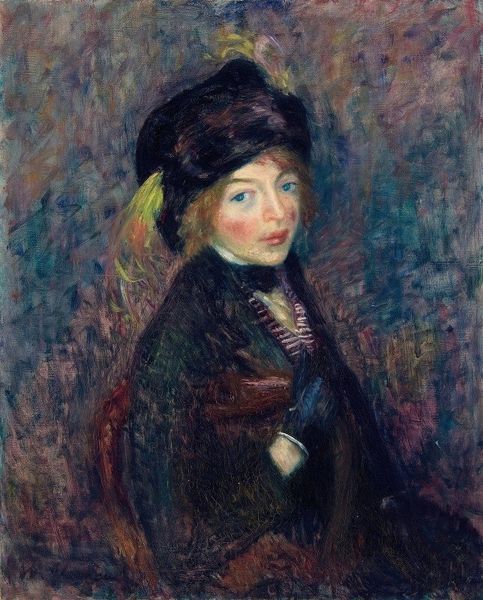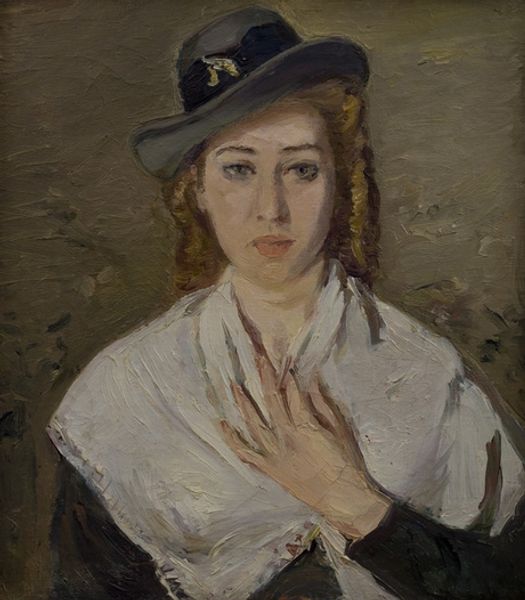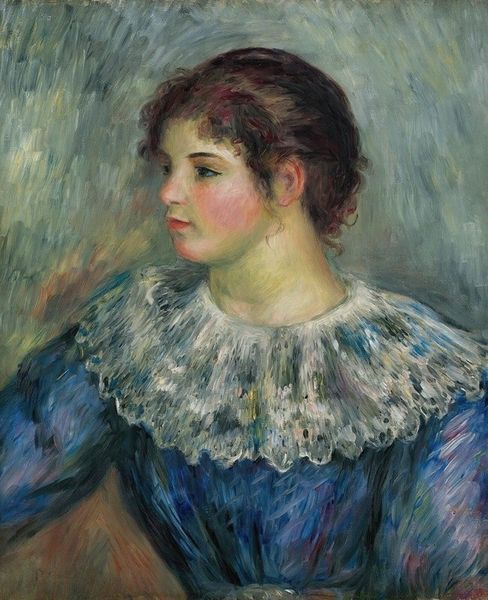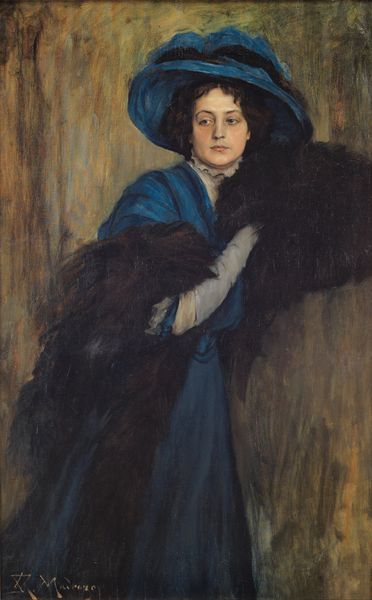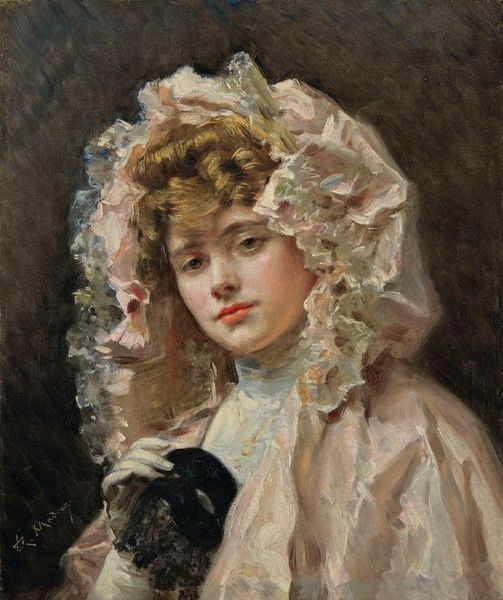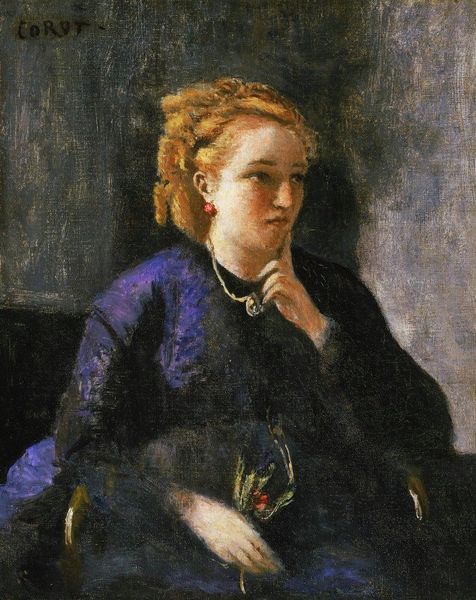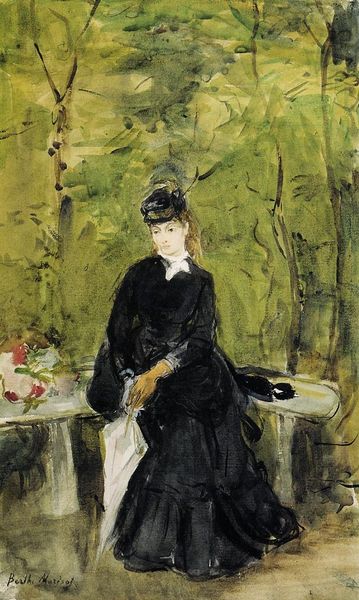
Dimensions: support: 972 x 864 mm frame: 1235 x 1130 x 90 mm
Copyright: CC-BY-NC-ND 4.0 DEED, Photo: Tate
Curator: Here we have Sir William Orpen's "Lady Orpen," currently residing in the Tate Collections. Editor: The somber color palette certainly sets a contemplative mood, almost mournful. Curator: Absolutely. Orpen, active during a time of immense social upheaval, often explored themes of identity and societal expectations. Consider the rigid posture, the veiled hat – symbols of constrained femininity. Editor: And the textures! The juxtaposition of the delicate lace and the weighty, dark fabric speaks to a tension between fragility and material wealth. One wonders about the production of these items and the labor behind them. Curator: Precisely. One must also consider the gaze. Is it direct, defiant, or demure? The ambiguity invites critical reflection on gender roles in the early 20th century. Editor: It's a potent reminder of how material culture is never divorced from questions of gender and class. Curator: Indeed. Orpen offers us a window into a complex social landscape. Editor: A landscape built from paint, fabric, and deeply ingrained societal norms.
Comments
Join the conversation
Join millions of artists and users on Artera today and experience the ultimate creative platform.
tate 6 months ago
⋮
Orpen's portrait of his wife was painted while they were on a holiday at Margate with William and Mabel Nicholson and their children. They had been married only for a few years, and he portrayed her repeatedly. This portrait was studied by artificial light, and the stormy background added later, with its glimpse of sea and sand dune. The Orpens and Nicholsons loved to dress up. This conglomeration of gloves, scarf, veil, black ostrich feather and bonnet may not have been meant seriously, and Orpen often let loose his sense of humour in his private paintings. He was then just beginning his hardworking career as a society portrait painter, which was to lead to a great number of portraits of spectacular but prosaic realism. Gallery label, September 2004
